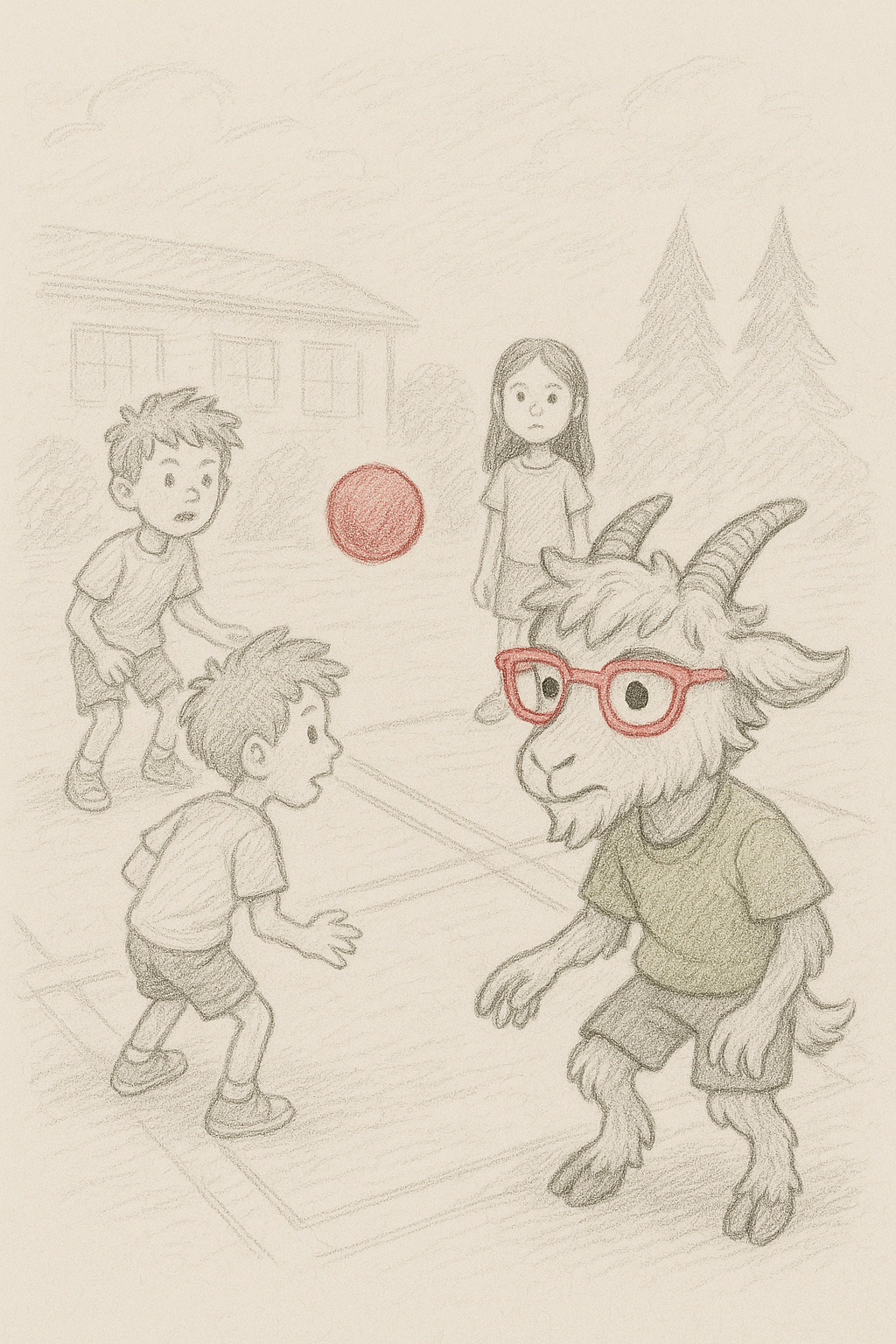Decent Serves!
Middle school playground games taught me a lot about the world.
I’ve already ranted about one of those magical half-sport, half game activities—tetherball:
Here was a tangible, real-world example of spherical geometry, inversion, and a way to think in terms of angles. This was such a great way for kids to learn geometry.
Even better, it was a psychological game. You could get kids to think you were going one way, then get them to react in a way that leaves them open. There was a certain advantage to serving the ball by striking it downward so that it would go over your opponent’s head on the other side, but one game was to hit the ball upward instead—if the person was expecting something up high, you could sometimes go low and surprise them.
Tetherball was great for all of those reasons, but four square was even better. It involved the same lessons in geometry and hand-eye coordination that came from other ball sports like baseball or football, but even more of the psychological games being played under the surface.
The game took place in a large square divided into four smaller squares, each big enough for a middle school kid to have a little personal space around them. This morning, I looked up how big four square is supposed to be—16 feet square total, with each kid’s square being eight feet on a side—and I’m pretty confident our squares were much smaller.
The great thing about four square was that you only needed a ball that bounced (definitely available at my middle school), and some concrete. Even a piece of chalk was optional as long as the concrete was already divided in some grid-like manner, so four square was a very easy game for us to play before school—you could easily kill ten or fifteen minutes without much fuss.
This was a game that any kid could play, as long as they had a little bit of athleticism and a little bit of creativity, but one player had certain key advantages at the start of each game.
The server got to set the special rules of the game, meaning what all players (including the server) were allowed to do. These were special exceptions to the rule that the ball had to bounce exactly once in your square before you hit it back, and you could only hit it once.
The special abilities really changed the nature of the game. It meant that, like tetherball, cleverness could overcome athleticism some of the time. Brains and brawn both mattered, and I liked that.
One of the more perverse abilities was called bobbling, or “bobbles”, the way we would describe it. If you were serving, you might declare no bobbles before the start of the match, prohibiting every player’s ability to sort of hold onto the ball for a moment by jostling it around.
A close cousin to bobbles was the baby, where you would squat down and just drop the ball onto your opponent’s square, allowing it to bounce twice. A milder form of the baby/bobble combo my cohort really enjoyed was called the backstop, where you were allowed to volley the ball up into the air once before returning it from over your head, smacking it back down. Backstops were cool.
If I was serving, I might declare babies, bobbles, and backstops to be allowed, but I would probably prohibit slams and shoeshines (has alliteration been such a concern my entire life?), which seemed a bit less fun to us, and more sinister or dirty. Also, if you allowed slams and a person spiked a ball pretty hard onto the concrete, it might fly away pretty far—something very disruptive when we were carving out a little ad-hoc space between buildings.
The thing about four square that had a different dynamic than all the other games was the make-it, take-it nature of the game.
Whoever served could be in that spot for a while—there was just too much of an advantage since the server got to set the rules, and besides, there was a small intrinsic advantage to serving in the first place—no player knows which of the three squares the server will pick, so everyone has to be ready at the start of the game.
If you add in the special moves that server is good at, it would require quite an upset for one of the other three players to win. Still, four square can be very unpredictable, and even the best servers I knew would eventually all lose.
Make-it, take-it runs mean that whoever wins gets to make the rules, and then there’s a very good chance they’ll win again. Then, they get to make the rules, so there’s a very good chance they win again. Then… well, you get the idea.
Every system needs to allow some room for the non-servers to feel like they might eventually win and become the server one day, but if no kids believe that, then the game just sucks and nobody wants to play.
This is where decent serves come in.
While the server got to pick nearly all the rules, this was one thing the other players simply had to blurt out in order to insist on. The server then had to start the game by bouncing the ball into their square, then sort of volleying it into another square after the bounce.
An indecent serve could give the server an even greater advantage, like not bouncing the ball at all, or bobbling it and then dropping a baby onto a square for a quick, cheap win.
Decent serves were the bare minimum, but they were just enough for us to believe we were still in the game, so we kept playing.





We've gotten our kids playing 4 square so that's been a blast.
Wasn't "Indecent Serve" a movie? I'm pretty sure it was about a man asking to spend a night playing four square.